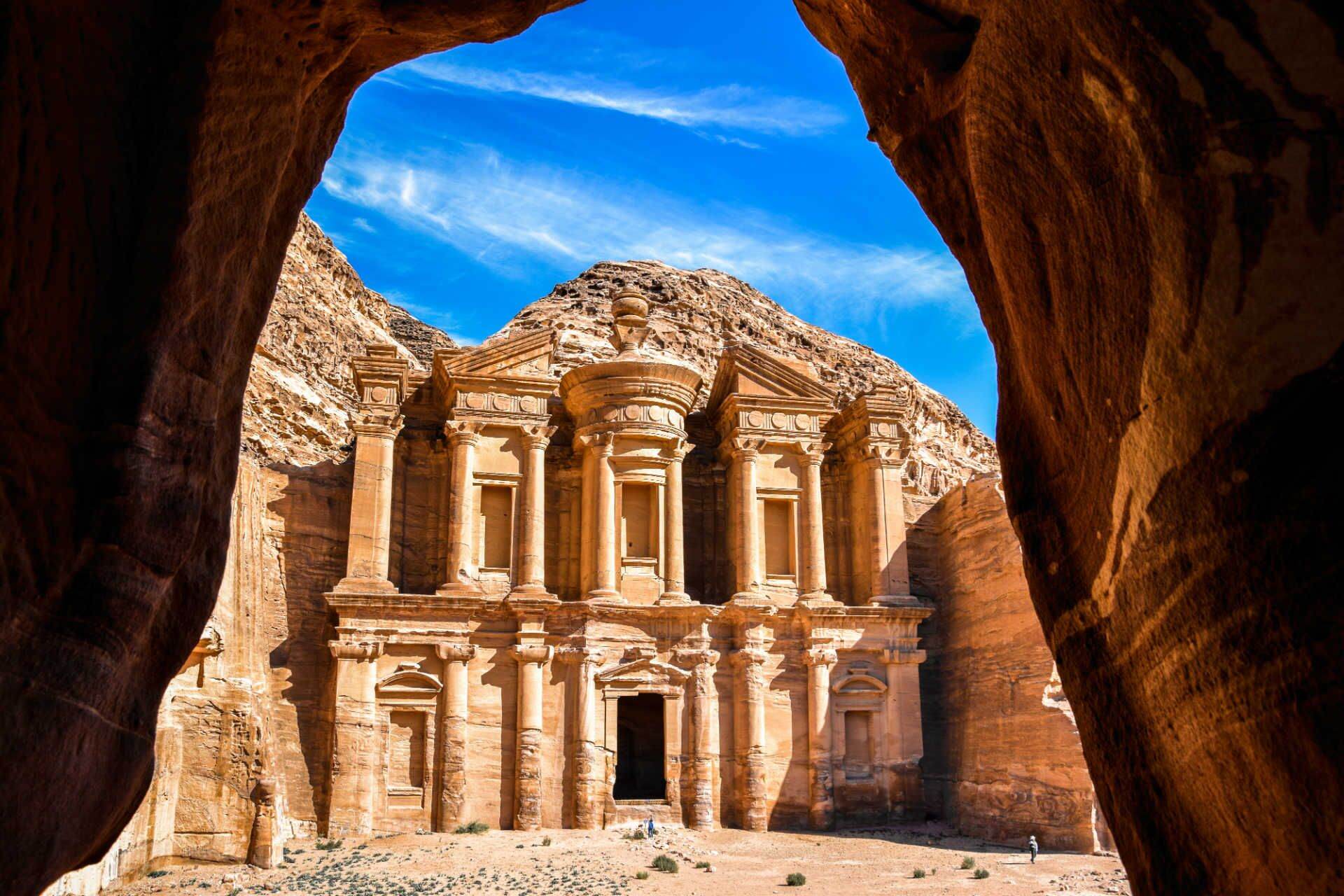
Ever wondered about the rich tapestry of history, culture, and innovation that defines the Middle East? This region, a crossroads of civilization, is brimming with stories that might just surprise you. From ancient inventions that shaped the world to modern-day feats that continue to push boundaries, the Middle East has always been a hub of remarkable achievements. Did you know that the Middle East is home to some of the oldest cities on Earth, or that it's where coffee was first brewed? These are just snippets of the fascinating facts waiting to be discovered. So, buckle up for a ride through history, culture, and groundbreaking innovations as we unveil 25 great Middle Eastern facts that are sure to amaze and inspire. Get ready to have your mind blown by the wonders of this vibrant region!
Key Takeaways:
- The Middle East is a diverse and culturally rich region, known for its ancient history, iconic landmarks, and significant contributions to art, science, and religion.
- From the birthplace of major monotheistic religions to the world's tallest building, the Middle East is a fascinating blend of ancient wonders and modern innovations.
Understanding the Middle East
The Middle East, a region that spans across Western Asia and extends into Egypt in North Africa, is known for its rich history, diverse cultures, and significant contributions to civilization. From the ancient times of Mesopotamia to the modern-day innovations, this area has always been a center of intrigue and discovery.
-
Mesopotamia, located in present-day Iraq, is often called the cradle of civilization. It's where writing, the wheel, and the first cities emerged.
-
The Middle East is home to the Dead Sea, the lowest point on Earth's surface, sitting at 430.5 meters (1,412 feet) below sea level.
Cultural Richness and Diversity
The cultural tapestry of the Middle East is as diverse as its landscapes, ranging from bustling markets to tranquil deserts.
-
Arabic is the most widely spoken language, but Turkish, Persian, Hebrew, and Kurdish are also major languages in the region.
-
Middle Eastern cuisine is renowned worldwide, with dishes like hummus, falafel, and kebabs gaining international fame.
-
The region is the birthplace of the world's three major monotheistic religions: Judaism, Christianity, and Islam, each contributing significantly to the cultural and spiritual landscape.
Architectural Marvels
The Middle East boasts some of the most iconic architectural wonders that have stood the test of time.
-
The Pyramids of Giza in Egypt are the only remaining ancient wonder of the world, with the Great Pyramid being the largest of the three.
-
Petra, an archaeological site in Jordan, features buildings carved directly into pink sandstone cliffs, earning it the nickname "The Rose City."
-
The Burj Khalifa in Dubai, United Arab Emirates, is the world's tallest building, reaching an impressive height of 828 meters (2,717 feet).
Economic and Technological Advances
Despite its ancient roots, the Middle East is a region of rapid economic growth and technological innovation.
-
Oil and gas have been the backbone of the region's economy, with countries like Saudi Arabia, Iran, and the United Arab Emirates being top producers.
-
In recent years, Middle Eastern countries have invested heavily in technology and renewable energy, aiming to diversify their economies.
-
Dubai's Smart City initiative seeks to transform the city into a global technology hub, leveraging blockchain, AI, and smart technologies.
Environmental and Geographical Highlights
The Middle East's geography is as varied as its cultures, featuring deserts, mountains, and fertile valleys.
-
The Nile River, the longest river in the world, flows through Egypt and is a key source of sustenance for the country.
-
The Rub' al Khali or Empty Quarter, is the largest contiguous sand desert in the world, covering parts of Saudi Arabia, Oman, the UAE, and Yemen.
-
Mount Damavand, Iran's highest peak, is a potentially active volcano and a prominent feature in Persian mythology.
Social and Political Dynamics
The social and political landscapes of the Middle East are complex, shaped by historical conflicts and contemporary challenges.
-
The region has been at the heart of geopolitical tensions, with issues like the Israeli-Palestinian conflict and the Syrian civil war drawing international attention.
-
Women's rights have seen significant progress in some Middle Eastern countries, with increasing participation in education, politics, and the workforce.
-
Youth unemployment remains a challenge, prompting governments to invest in education and entrepreneurship programs.
Artistic Contributions
The Middle East has made lasting contributions to the world of art, literature, and music.
-
The Arabian Nights, a classic collection of Middle Eastern folk tales, has enchanted readers worldwide with stories of Aladdin, Sinbad, and Scheherazade.
-
Calligraphy is a highly respected art form, with Arabic script being a key element in Islamic art and architecture.
-
Contemporary Middle Eastern artists and filmmakers are gaining international recognition, showcasing the region's modern cultural landscape.
Scientific and Educational Achievements
The Middle East has a rich tradition of scientific inquiry and educational excellence.
-
The House of Wisdom in Baghdad was a major intellectual center during the Islamic Golden Age, where scholars from various cultures gathered to study and translate works of science and philosophy.
-
Middle Eastern universities are among the oldest in the world, with Al-Azhar University in Egypt, founded in 970 AD, being one of the most prestigious.
-
The region has made significant contributions to mathematics, including the development of algebra and the introduction of Arabic numerals to Europe.
Festivals and Celebrations
Festivals and celebrations in the Middle East are vibrant and deeply rooted in the region's traditions and religions.
-
Ramadan, the Islamic holy month of fasting, is observed by millions across the Middle East, culminating in the festive celebration of Eid al-Fitr.
-
The Dubai Shopping Festival attracts visitors from around the globe, offering entertainment, fireworks, and, of course, shopping deals.
A Final Glimpse into the Middle East
We've journeyed through a landscape rich with history, culture, and innovation, uncovering 25 fascinating facts about the Middle East. From the ancient pyramids of Egypt to the innovative skyscrapers of Dubai, this region offers a unique blend of the old and new. Its contributions to science, literature, and cuisine have left indelible marks on the world. As we conclude, let's remember the Middle East not just for its challenges but for its rich contributions to global heritage. These facts barely scratch the surface, inviting us to delve deeper and appreciate the complexities and beauty of this pivotal region. Whether it's through its spicy flavors, intricate architecture, or groundbreaking achievements, the Middle East continues to enchant and inspire curiosity among travelers and scholars alike.
Frequently Asked Questions
Was this page helpful?
Our commitment to delivering trustworthy and engaging content is at the heart of what we do. Each fact on our site is contributed by real users like you, bringing a wealth of diverse insights and information. To ensure the highest standards of accuracy and reliability, our dedicated editors meticulously review each submission. This process guarantees that the facts we share are not only fascinating but also credible. Trust in our commitment to quality and authenticity as you explore and learn with us.


